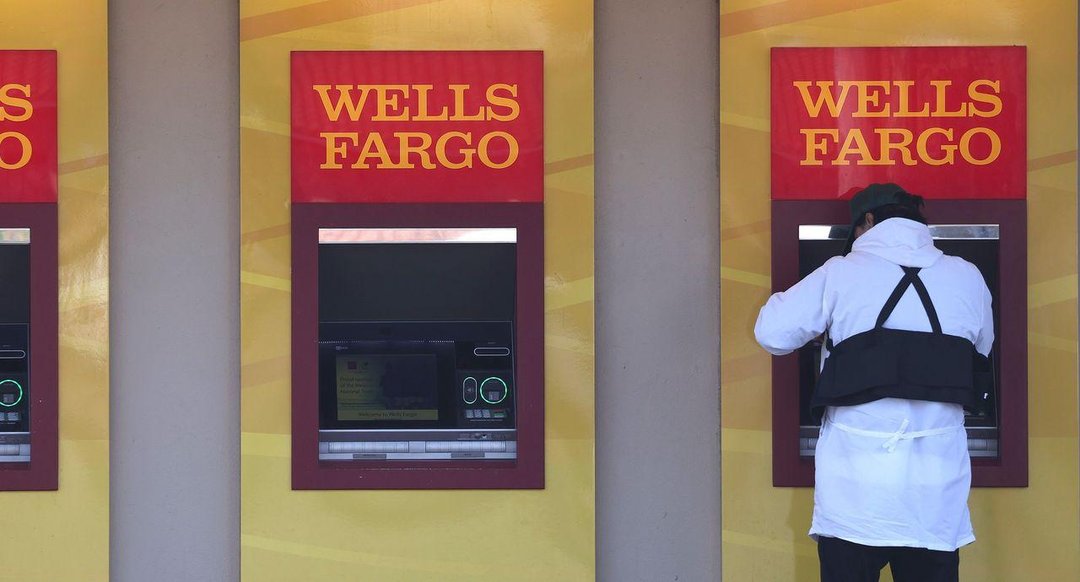
By Telis Demos
July 15, 2024
With the Federal Reserve poised to begin cutting interest rates, banks stand to benefit. But not right away.
High interest rates have started to wear on the biggest banks, with deposit costs rising and customers like credit-card and commercial-property borrowers feeling the effects of higher debt payments.

Wells Fargo is one of the banks reporting a drop in the difference between the rates they earn on assets and what they pay on liabilities. PHOTO: JUSTIN SULLIVAN/GETTY IMAGES
Ultimately, lower but still fairly high interest rates can work in banks’ favor. Rate cuts could stimulate more borrowing and encourage Wall Street dealmaking, while also helping banks dial back the rates they are paying on things like high-yield savings accounts or certificates of deposit. If the Fed ultimately only cuts rates a few times and doesn’t return to the ultralow rates of previous cycles, that would help keep banks’ overall interest earnings pretty robust.
But the transition to that world could get rocky. The first small decline in rates probably won’t by itself stimulate a huge amount of new lending. Yet it will start to eat into banks’ interest earnings on their cash, and on floating-rate loans tied to benchmark rates, like credit cards or corporate revolvers. And a lot of depositors are probably still going to be looking for a good return on their cash.
When it reported second-quarter earnings on Friday, Wells Fargo said it currently expects net interest income this year to be down by around 8% to 9%, a bit more pessimistic than its prior range of a roughly 7% to 9% decline. This is a closely tracked measure of how much banks earn in interest net of what they pay out in interest expense.
Calling which quarter will be the “trough” for net interest income “sometimes can be a little tough,” Wells Fargo Chief Financial Officer Michael Santomassimo told analysts on Friday. But, he said, “we still feel pretty good about being able to see that happen over the coming few quarters.”
Wells, Citigroup and JPMorgan Chase all reported another quarter-over-quarter drop in their reported net interest margin, which is a way to measure the difference between the rates banks earn on assets and what they pay on liabilities.
Banks can escape this squeeze and add more dollars overall to their earnings if they are growing their loan books. But big corporate borrowers are still acting cautiously. And in the case of commercial real-estate loans, some banks may actually be looking to shrink those books for now, hoping that construction projects find permanent financing elsewhere, or that borrowers will put up a lot more equity and get smaller loans when they refinance.
Consumer lending via credit cards is still growing at a strong clip. Yet worries about consumers mean this might not be the best time to go hog-wild with cards. Banks’ net charge-off rates on card loans rose sharply in the second quarter from a year prior.
Banks argue the jump in losses partly reflects the abnormally good credit performance during the pandemic. And delinquency rates were slowing quarter over quarter. But it might still take a couple quarters to work through that hump of losses, and for the benefits of lower monthly payments to move through borrowers’ budgets.
As for deposits, lower interest rates should eventually take the pressure off banks’ rising deposit costs. But a lot of customers have been taking their time to move cash out of things like checking accounts, and may still be doing so even if rates are slightly lower, meaning interest costs for banks could keep rising. Until longer-term bond yields pick up and people want to invest their cash or want to spend more, they might be content to let that cash sit and earn for as long as it can.
For example, Wells Fargo’s Santomassimo told analysts on Friday that the pace of overall increase in deposit costs had slowed in the first half of the year. But he also noted that the bank recently raised pricing on sweep deposits in advisory brokerage accounts, which wasn’t a change anticipated in the bank’s original net interest income guidance.
There are other things working in the background that might help big banks. A further jump in Wall Street dealmaking could add fee income. Falling interest rates also can raise the value of banks’ securities portfolios, building up more capital. That, combined with regulators revisiting some of their plans to increase banks’ capital requirements, could leave the biggest lenders with a lot of excess resources.
But those resources need better opportunities to be deployed—and that might have to wait for a few more rate cuts to filter through to stronger economic activity. For now, it seems bank stocks are on pause. Citigroup, JPMorgan and Wells shares were all down on Friday. The KBW Nasdaq Bank index is still up over 13% this year, but that trails the S&P 500’s nearly 18% rise.
Sometimes the waiting really is the hardest part.
Write to Telis Demos at Telis.Demos@wsj.com
Dow Jones & Company, Inc.



